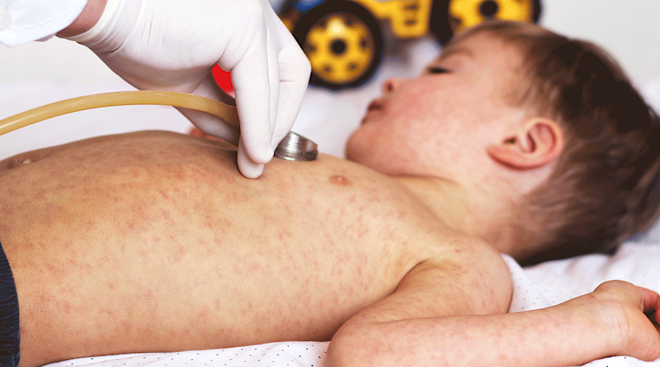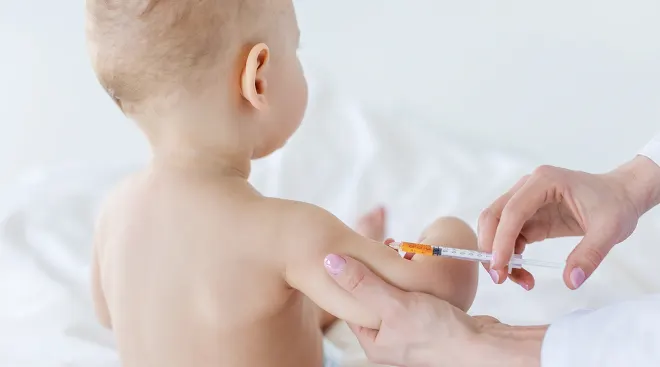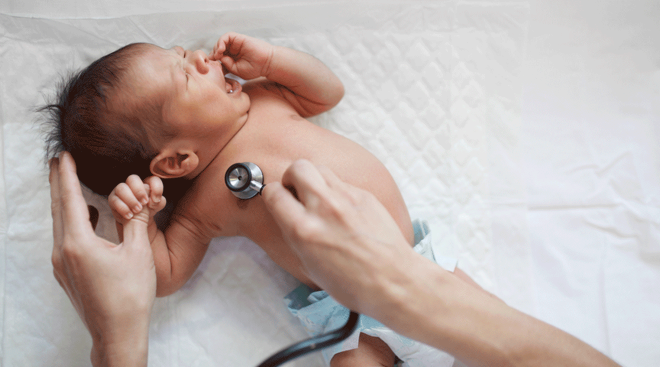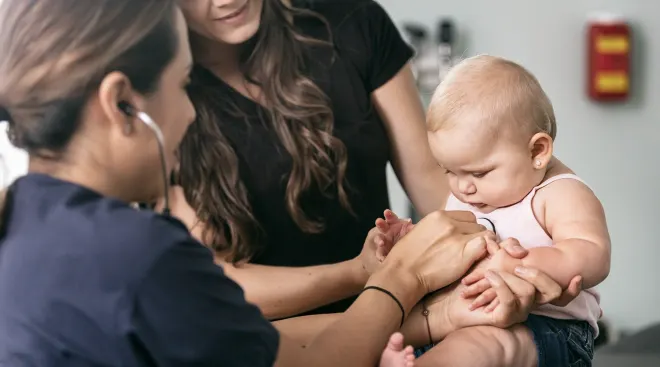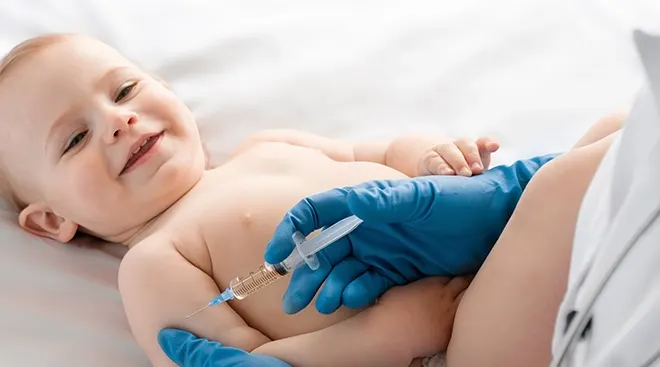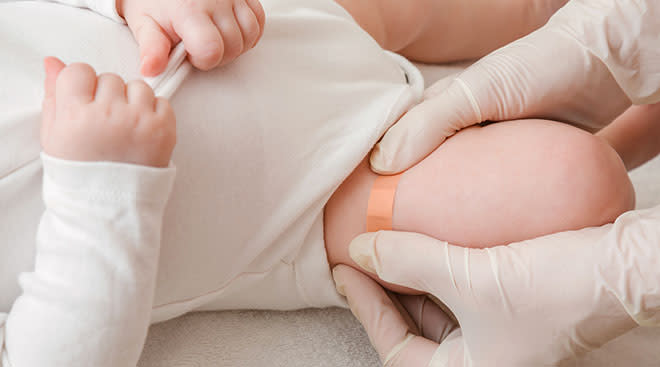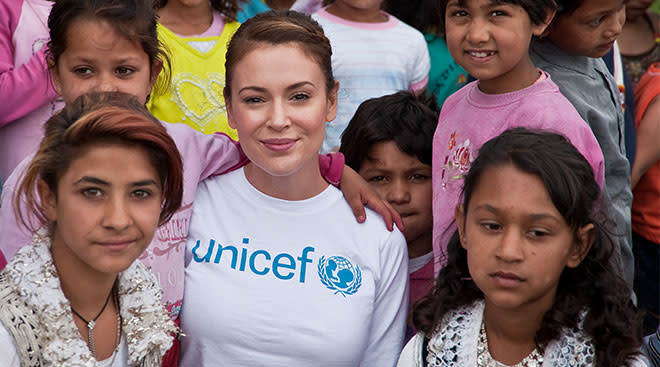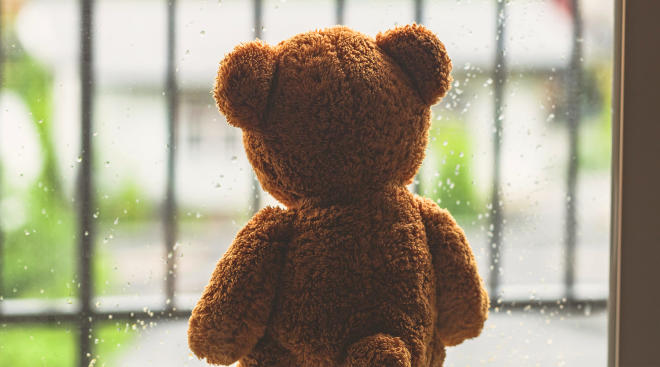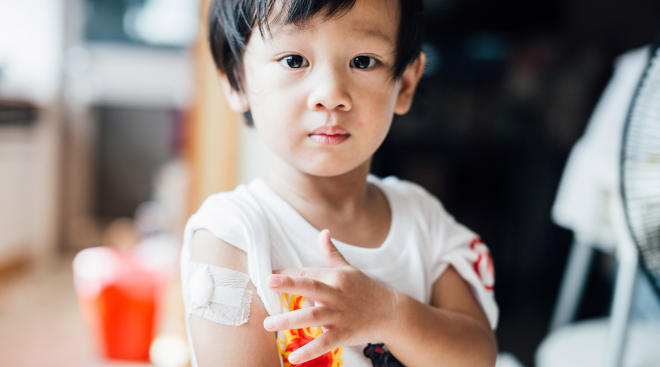Vaccinations: What Baby Will Need and When
It’s tough to watch your little one get poked and even worse to hear their inevitable cries, but immunizations are crucial for babies’ health, as they help the body build up immunity before babies are exposed to potentially life-threatening diseases. In fact, the US Centers for Disease Control and Prevention (CDC) offers a recommended immunization schedule for infants that lists out which vaccines baby should get and when, starting from birth.
Like any medication, vaccines can cause side effects—but they’re almost always minor (like redness and swelling at the injection site) and go away within a few days, the CDC says. Serious side effects, like a severe allergic reaction, are very rare, and any pediatrician will reassure you that the benefits of having those crucial antibodies to fight off infections far outweigh the risks.
So which vaccines will baby get, and what exactly do these shots protect your little one from? Here’s what the CDC’s infant immunization schedule looks like.
What it prevents: Hepatitis B, a chronic or acute liver disease that can lead to liver failure and cancer.
When baby gets it: Doctors recommend three doses of HepB: The first dose should be given shortly after birth, possibly before baby’s even discharged from the hospital. A second dose should be given between 1 and 2 months of age. The third dose is administered when baby is between 6 and 18 months old.
If mom is hepatitis B surface antigen (HBsAg) positive, baby should get the HepB vaccine as well as the hepatitis B immune globulin vaccine ideally within 12 hours after birth, the CDC says. Baby should then receive three more doses of the vaccine (at birth, at 1 month and at 6 months) and be tested for HBsAg and the antibody to HBsAg when baby is 12 to 15 months old.
Possible side effects: Brief soreness and fussiness
What it prevents: Rotavirus, the most common cause of diarrhea and vomiting in infants and young children, which can cause severe dehydration in babies. It’s not a shot—this vaccine is taken orally.
When baby gets it: Doctors recommend two to three doses, depending on the brand of vaccine. The first dose is given when baby is 2 months old and the second at 4 months. If the vaccine brand is RotaTeq, baby would get a third dose at 6 months.
Possible side effects: Fussiness; some babies may have mild, temporary diarrhea or vomiting.
What it prevents: This is a combination vaccine to protect against diphtheria, tetanus and pertussis (otherwise known as whooping cough). Diphtheria used to be a major cause of childhood illness and death. Now, it only occurs in a few cases a year, thanks to this vaccine. Tetanus is a serious illness that causes painful tightening of the jaw muscles. Pertussis, or whooping cough, is a highly contagious respiratory infection.
When baby gets it: At 2 months, 4 months and 6 months, and then again between 15 and 18 months and 4 to 6 years.
Possible side effects: Tenderness, swelling, redness, fever and/or loss of appetite within two days of receiving the shot.
What it prevents: “Hib” disease, which is a harmful bacterial illness. You probably haven’t heard of it, but Hib was the leading cause of bacterial meningitis (a potentially deadly brain infection) in children before the vaccine was developed. Kids with Hib may suffer permanent brain damage or have serious complications, like pneumonia.
When baby gets it: At 2 months, 4 months and 6 months, and then between 12 and 15 months.
Possible side effects: Fever, redness and/or tenderness at the site of the shot.
What it prevents: Streptococcus pneumoniae, an illness that can be serious and potentially lead to death. It can cause blood infections, ear infections, meningitis and pneumonia in children. The vaccine protects children for three years, when they’re most vulnerable to the disease.
When baby gets it: At 2 months, 4 months and 6 months, and then again between 12 and 15 months.
Possible side effects: Low-grade fever, redness and/or tenderness at injection site.
What it prevents: Polio, once a widespread epidemic that paralyzed and killed thousands of people.
When baby gets it: At 2 months, 4 months, 6 to 18 months and 4 to 6 years.
Possible side effects: Soreness or redness near the site of injection; an allergic reaction rarely occurs.
What it prevents: The flu, which the CDC says is more dangerous to children than the common cold.
When baby gets it: Starting at 6 months of age, children need two doses every year (separated by at least four weeks) for the best protection.
Possible side effects: Fever, aches, soreness, redness and/or swelling where the shot was given.
What it prevents: Measles, mumps and rubella, which are dangerous diseases that can cause rashes and fevers and lead to serious conditions like pneumonia, meningitis, seizures and deafness.
When baby gets it: One dose at 12 to 15 months and a second dose at 4 to 6 years.
Possible side effects: Rash, slight fever, joint aches and/or swelling in neck and salivary glands a week or two after receiving the shot.
What it prevents: Chicken pox. Some people who get the vaccine may still get chicken pox, but it’s usually very mild and the recovery time is faster. Chicken pox can bring on a fever and severe rash, and can lead to a bacterial infection of the skin, swelling of the brain and pneumonia. Many states now require children to get the vaccine before entering school, since it results in a milder illness if your child does get sick and less time missed from school.
When baby gets it: One dose at 12 to 15 months and a second dose at 4 to 6 years.
Possible side effects: Soreness or swelling at the injection site, mild fever and/or rash.
What it prevents: Hepatitis A, a contagious disease that causes liver inflammation. Young children may not have symptoms, so the disease often isn’t recognized until the child’s caregiver becomes ill.
When baby gets it: Two doses, separated by six to 18 months, between 12 and 23 months.
Possible side effects: Soreness at the injection site, headache, loss of appetite and/or tiredness.
What it prevents: Meningococcal disease, a bacterial infection that can cause meningitis, blood infections and other infections.
When baby gets it: Two doses are recommended for high-risk children between the ages of 9 to 23 months, separated by at least 12 weeks. Two doses of the vaccine are recommended for all children and adolescents between the ages of 11 and 18 years old; the first dose is given at 11 to 12 years and then a booster at 16 to 18 years.
Possible side effects: Redness and soreness at the injection site; very few people can develop a fever.
Please note: The Bump and the materials and information it contains are not intended to, and do not constitute, medical or other health advice or diagnosis and should not be used as such. You should always consult with a qualified physician or health professional about your specific circumstances.
Plus, more from The Bump:
Navigate forward to interact with the calendar and select a date. Press the question mark key to get the keyboard shortcuts for changing dates.


































